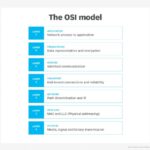Rastafari is a religious and political movement that originated in Jamaica in the 1930s. It has since spread globally, attracting diverse groups who embrace its unique blend of Protestant Christianity, mysticism, and Pan-African political consciousness.
Rastafarians, often called Rastas, possess a distinctive understanding of their past, present, and future. Drawing inspiration from Old Testament narratives, particularly the Israelites’ enslavement in Exodus and their exile from Palestine during the Babylonian Captivity, Rastas interpret the experiences of people of African descent in the Americas and worldwide as an “exile in Babylon.” They believe that Jah (God) tests them through slavery, economic injustice, and racial oppression. Inspired by the New Testament’s Book of Revelation, Rastas anticipate liberation from captivity and their return to Zion, a symbolic name for Ethiopia derived from the biblical concept of Zion as the prophesied heavenly destination for repatriation and redemption.
Ethiopia, a historical site of dynastic power, holds special significance for Rastas. They consider it the ultimate homeland for all Africans and the dwelling place of Jah. Repatriation to Ethiopia is a central aspiration for many within the movement. A significant tenet, though not universally accepted, is the belief that Emperor Haile Selassie I of Ethiopia, crowned in 1930, is the messiah and Second Coming of Christ, destined to redeem all Black people. The movement’s name is derived from Haile Selassie I’s pre-coronation name, Ras Tafari.
Jamaican Rastas are descendants of enslaved Africans converted to Christianity by missionaries in Jamaica using the King James Version of the Bible. Rastas argue that the King James Version is a corrupted account of God’s true word, alleging that English slave owners promoted distorted interpretations of the Bible to exert control over enslaved people. To access the true meanings of biblical scriptures, Rastas cultivate a mystical connection with Jah, known as “I-and-I.” Their reading of the Bible is selective, emphasizing passages from Leviticus that discourage cutting hair and beards, restrict the consumption of certain foods, and prescribe rituals of prayer and meditation. Adherence to Old Testament principles leads many Rasta men to uphold patriarchal values, and the movement often faces accusations of sexism from both insiders and outsiders. “Iyaric,” also known as “Dread-talk,” is the distinctive linguistic style employed by many Rastas, characterized by the substitution of the sound “I” for certain syllables.
 Bob Marley performing, highlighting his influence on reggae and the Rastafari movement
Bob Marley performing, highlighting his influence on reggae and the Rastafari movement
Rastafari “livity,” or the principle of a balanced lifestyle, encompasses specific practices. These include wearing dreadlocks (long, rope-like strands of knotted hair left in its natural state), dressing in the colors red, green, gold, and black (symbolizing the life force of blood, herbs, royalty, and Africanness), and adhering to an “I-tal” diet (natural and vegetarian). Religious rituals consist of prayer services, the smoking of ganja (marijuana) to facilitate “itation” (meditation) with Jah, and “bingis” (all-night drumming ceremonies). Reggae music evolved from the Rastafari movement and gained global popularity through the Jamaican singer-songwriter Bob Marley.
In conclusion, Rastafari is a complex and multifaceted movement with deep roots in Jamaican history and culture. Its unique blend of religious beliefs, social values, and cultural practices has resonated with people around the world, making it a significant force in contemporary society.
